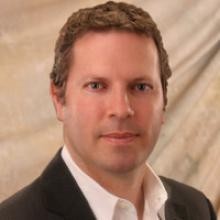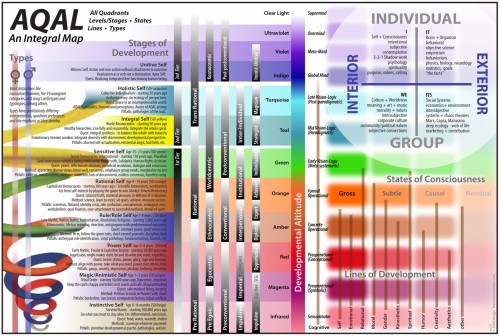An All-Inclusive Framework for the 21st Century
 Below you can read the article of Sean Esbjörn-Hargens about integral theory which he published at www.integrallife.com. Presently this is the main overviewing article on the international pages in this theme.
Below you can read the article of Sean Esbjörn-Hargens about integral theory which he published at www.integrallife.com. Presently this is the main overviewing article on the international pages in this theme.
Sean Esbjörn-Hargens is associate professor and founding president of JFK University Integral Theory department and also the founding director of Integral Research Centre. He has been working in close cooperation with Ken Wilber for a decade in order to work out an integral model that is operable in many different contexts.
Sean at present is the most often publishing author who uses the integral model in his writing in such diverse themes as training, sustainable development, ecology, research, themes of intersubjectivity, science and faith, consciousness researches and games.
An All-Inclusive Framework for the 21st Century
An overview of integral theory
This introduction provides up-to-date help for those wishing to get to know the integral theory and is a perfect present for those colleagues and friends of ours who continuously keep asking us: „So, practically speaking, what is integral theory in fact? ”
It has been a justifiable complaint for many years that there is no short introduction to the AQAL model. Ken Wilber wrote some introductions to it, but in many fields these are not considered ideal. We hope that this new attempt will help filling out this space and will become an essential source for those wishing to get to know the basics on integral theory. I tried to compose it in such a way that even very experienced integral practitioners find something new in it as well, so I elaborated on some new details of integral theory.

Figure: Overview of the integral theory / Sean Esbjörn-Hargens: The all-incorporating framework of the XXI. century
The word integral means comprehensive, inclusive, non-marginalizing, embracing. Integral approaches to any field attempt to be exactly that: to include as many perspectives, styles, and methodologies as possible within a coherent view of the topic. In a certain sense, integral approaches are “meta-paradigms,” or ways to draw together an already existing number of separate paradigms into an interrelated network of approaches that are mutually enriching.
Ken Wilber
The world has never been so complex as it is right now—it is mind boggling and at times emotionally overwhelming. Not to mention, the world only seems to get more complex and cacophonous as we confront the major problems of our day: extreme religious fundamentalism, environmental degradation, failing education systems, existential alienation, and volatile financial markets. Never have there been so many disciplines and worldviews to consider and consult in addressing these issues: a cornucopia of perspectives. But without a way of linking, leveraging, correlating, and aligning these perspectives, their contribution to the problems we face are largely lost or compromised. We are now part of a global community and we need a framework—global in vision yet also anchored in the minutiae of our daily lives—that can hold the variety of valid perspectives that have something to offer our individual efforts and collective solution building.
In 1977 American philosopher Ken Wilber published his first book, The Spectrum of Consciousness. This groundbreaking book integrated the major schools of psychology along a continuum of increasing complexity, with different schools focused on various levels within that spectrum. Over the next 30 years he continued with this integrative impulse, writing books in areas such as cultural anthropology, philosophy, sociology of religion, physics, healthcare, environmental studies, science and religion, and postmodernism. To date, Wilber has published over two dozen books and in the process has created integral theory. Wilber’s books have been translated into more than 24 languages, which gives you an idea as to the global reach and utility of integral theory. Since its inception by Wilber, integral theory has become one of the foremost approaches within the larger fields of integral studies and meta-theory. This prominent role is in large part the result of the wide range of applications that integral theory has proven itself efficaious in as well as the work of many scholar-practitioners who have and are contributing to the further development of integral theory.
Integral theory weaves together the significant insights from all the major human disciplines of knowledge, including the natural and social sciences as well as the arts and humanities. As a result of its comprehensive nature, integral theory is being used in over 35 distinct academic and professional fields such as art, healthcare, organizational management, ecology, congregational ministry, economics, psychotherapy, law, and feminism. In addition, integral theory has been used to develop an approach to personal transformation and integration called Integral Life Practice (ILP). The ILP framework allows individuals to systematically explore and develop multiple aspects of themselves such as their physical body, emotional intelligence, cognitive awareness, interpersonal relationships, and spiritual wisdom. Because integral theory systematically includes more of reality and interrelates it more thoroughly than any other current approach to assessment and solution building, it has the potential to be more successful in dealing with the complex problems we face in the 21th century.
Integral theory provides individuals and organizations with a powerful framework that is suitable to virtually any context and can be used at any scale. Why? Because it organizes all existing approaches to and disciplines of analysis and action, and it allows a practitioner to select the most relevant and important tools, techniques, and insights. Consequently, integral theory is being used successfully in a wide range of contexts such as the intimate setting of one-on-one psychotherapy as well as in the United Nations “Leadership for Results” program, which is a global response to HIV/AIDS used in over 30 countries. Towards the end of this article I provide additional examples of integral theory in action to illustrate the variety of contexts in which people are finding the integral framework useful.
Wilber first began to use the word “integral” to refer to his approach after the publication of his seminal book Sex, Ecology, Spirituality in 1995. It was in this book that he introduced the quadrant model, which has since become iconic of his work in general and integral theory in particular. Wilber’s quadrant model is often referred to as the AQAL model, with AQAL (pronounced ah-qwal) standing for all quadrants, all levels, all lines, all states, and all types. These five elements signify some of the most basic repeating patterns of reality. Thus, by including all of these patterns you “cover the bases” well, ensuring that no major part of any solution is left out or neglected. Each of these five elements can be used to “look at” reality and at the same time they represent the basic aspects of your own awareness in this and every moment.
In this overview I will walk you through the essential features of each of these elements and provide examples of how they are used in various contexts, why they are useful for an integral practitioner, and how to identify these elements in your own awareness right now. By the end of this tour, you will have a solid grasp of one of the most versatile and dynamic approaches to integrating insights from multiple disciplines. So let us begin with the foundation of the AQAL model: the quadrants.



